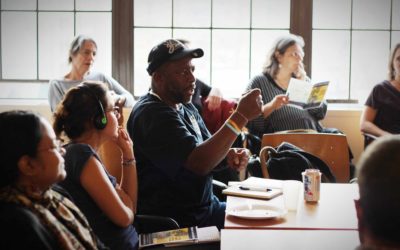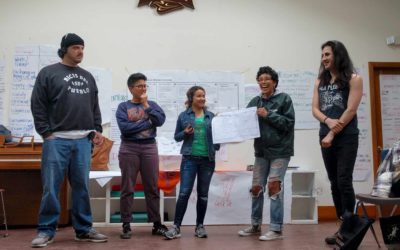Water
For Indigenous Peoples, water is life. Water is from the sacred Mother Earth. Water feeds all life on the planet. We are grown in water in our Mother’s bodies like a small ocean. Water is what makes Earth special. Life began in water. Water is the life blood of the Earth. Water is sacred, cleansing, refreshing, a pathway. When water is out of control there is nothing to do but run and wait. Water seeks balance with air and Earth. Water is in the land. Our bodies are mostly water. Water is life.
Water Commodification: Blue REDD and Dams
Water privatization is not new. There are several ways that water offsets happen. This section highlights just two schemes: Blue REDD and Dams.
Blue REDD
Coastal wetlands store and lock carbon into soils. These coastal systems, consisting of mangroves, salt marshes and seagrass meadows, are referred to as blue carbon by the conservation and development NGOs. Coastal wetlands are extremely important in preventing beach and soil erosion, they support hurricane recovery and are home to the highest biodiversity habitats in the world. At the same time, they are under huge threats from development and land use schemes. While conservation NGOs recognize the high carbon storage ability in coastal wetlands, they have opened the possibility to fund conservation efforts using carbon offsets and other types of climate-related financial mechanisms, such as payments for ecosystem services and the use of insurance schemes like debt-for-nature-swaps.
Depending on whether mangroves are included in a country’s definition of a forest, they can be eligible under Reducing Emissions from Deforestation and Forest Degradation (REDD) for carbon credits. The mangroves are then calculated in terms of carbon storage capacity as carbon credits, and sold on an international market so polluters can pollute beyond their cap. If mangroves are not considered a forest under a country’s definition, then the credits can be sold on a voluntarily market. Salt marshes and seagrasses can also be sold on the voluntary market. In theory, the money generated from selling the credits is then used by the conservation managers to maintain the coastal habitat. However, there are many incidents where the funding is never used in this way and local communities that rely on these habitats for artisanal fishing are negatively impacted.
“Water management and governance is based on the belief that we can control water; controlling flow and storage infrastructure. Yet, controlling water has resulted in an imbalance because we’ve been allocating water as if it is a commodity rather than a living being. I don’t believe you can really control a force as water because now we’re seeing higher sea levels and natural disasters such as flooding, tsunamis, hurricanes etc. The earth is only reacting to a fever, a fever that is climate change and colonization.”
– Julia Bernal, Pueblo Action Alliance, Indigenous pilot training, Chicago, July 2019.
Dams
Dams have been used as carbon offsets in the Clean Development Mechanism (CDM) since 2005. In fact, the majority of the renewable energy credits sold in the CDM have been issued for dam projects. The dam projects are categorized as renewable energy projects under the CDM.
There are multiple problems with dams. They stop a river’s natural flow and block species from moving up and down the river. In terms of climate change, The Earth Law Center states that dams “release greenhouse gases, destroy carbon sinks in wetlands and oceans, deprive ecosystems of nutrients, destroy habitats, increase sea levels, waste water and displace poor communities.”
Most reservoirs, especially those in tropical regions, release high levels of carbon dioxide and methane due to anaerobic bacteria that break down the vegetation in the base of the reservoir. Further, changes to the rivers’ timing, chemical and sediment makeup, and flow lead to damaging variations in floodplains and wetlands, and lead to the destruction of forests. This is why there are so many strong campaigns to un-dam rivers.
Workshop Sessions
Popular education activity guides for workshops and courses
Drawing Down through Community Mapping
Time: At least an hour Learning Style: Drawing, visual, empoweringObjective: This session can be a way for people to visualize changes in their communities. It is a way to get people thinking about creative ways to resist, organize and build together. Instructions:...
Oral History
Time: One hour, but this depends on how much time is set aside for sharing stories and how many participants are in the group. Learning Style: Sharing, oral, healing, group-buildingObjective: The purpose is for people to reflect on how carbon trading impacts their...
River of Life
Time: One hour, but this depends on how much time is left for sharing stories and how many participants are in the group. Learning Style: Drawing, visual, introspective, healing and sharingObjective: In the pilot trainings a suggestion was to make space for more...





